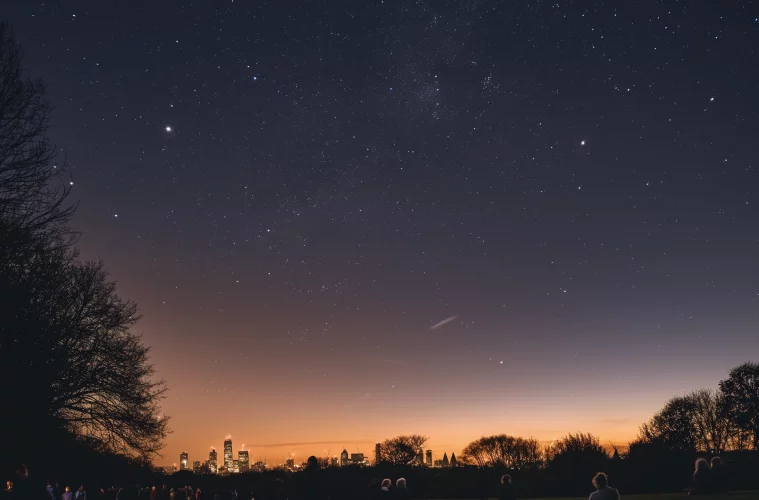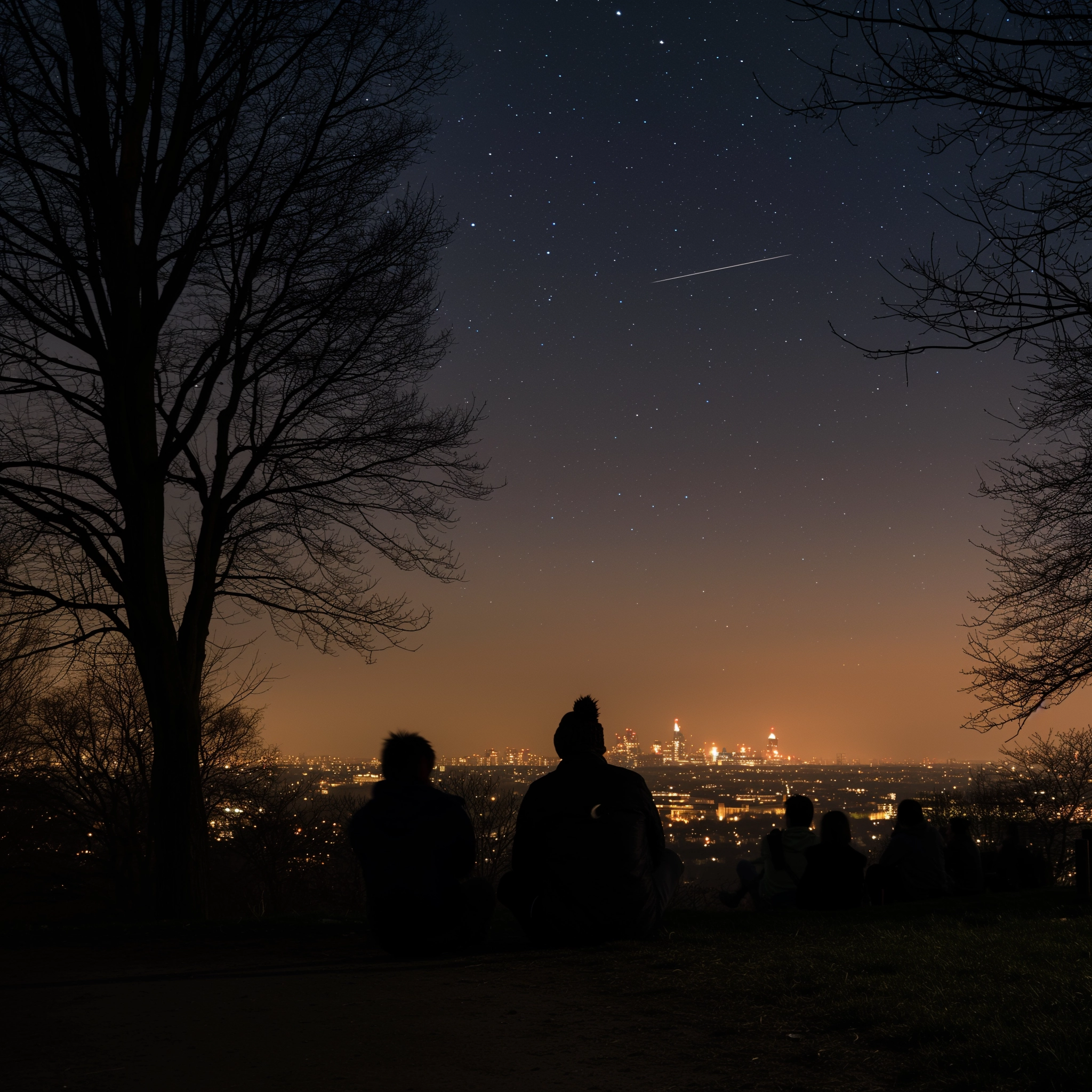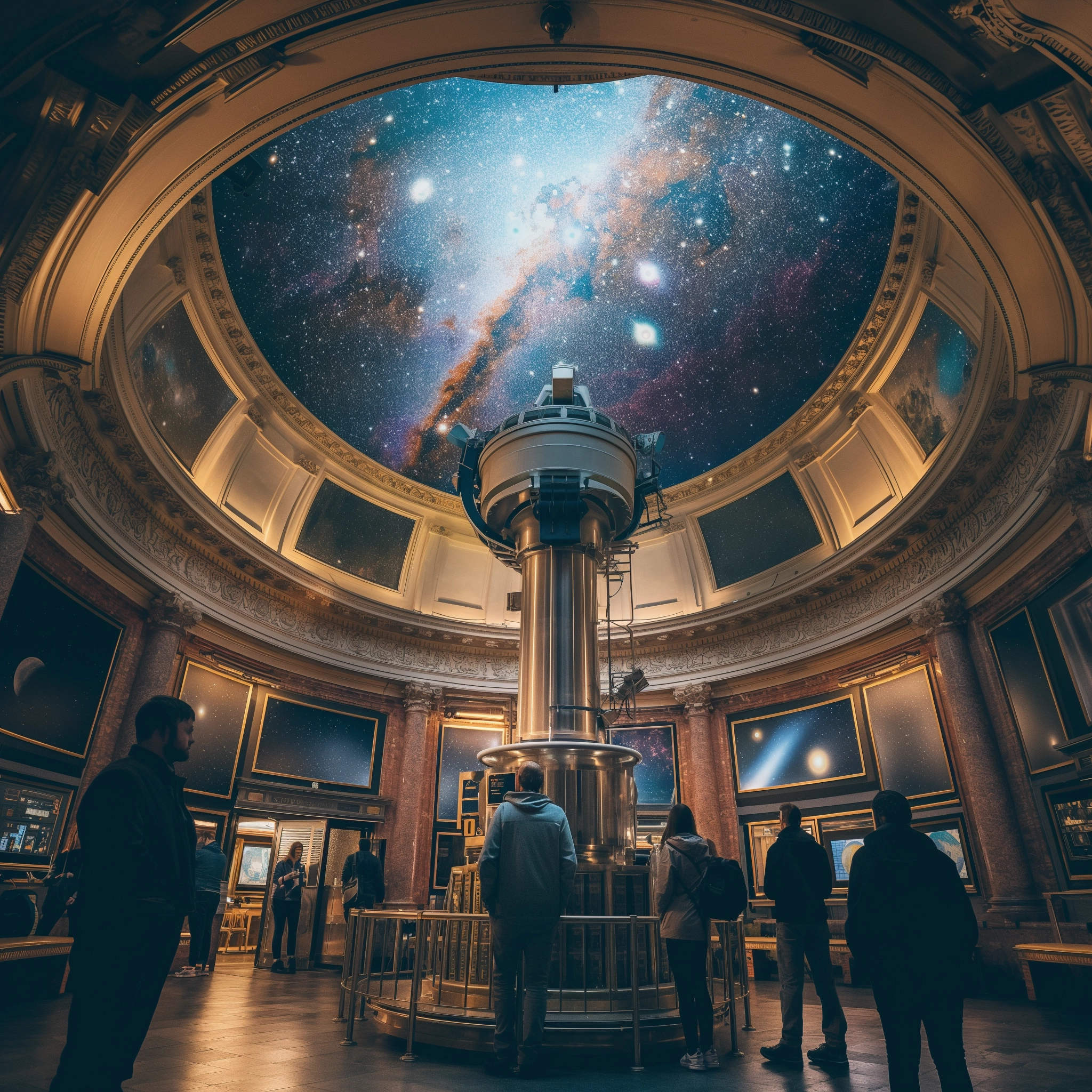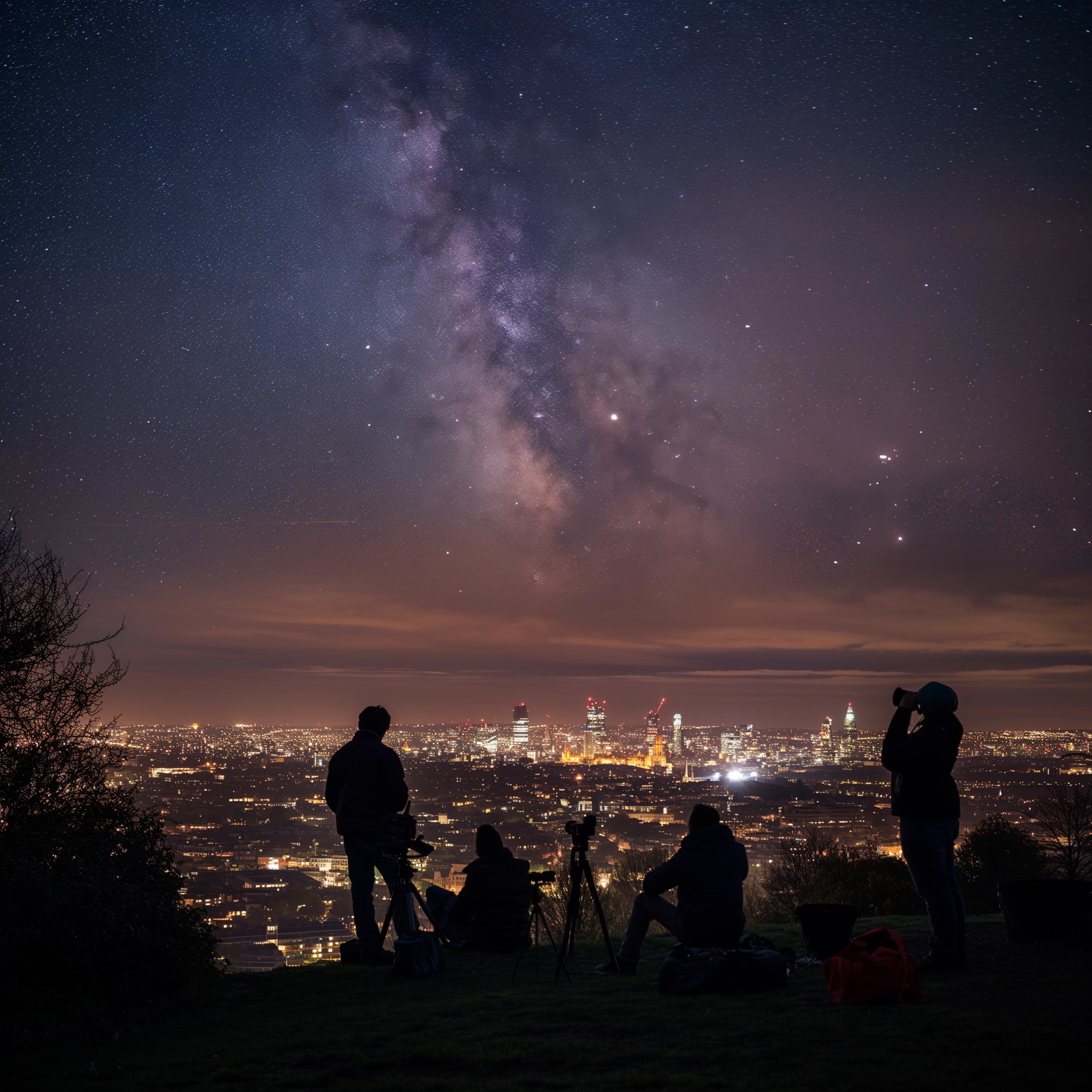Exploring the Night Sky in Urban London
London, with its vibrant history and bustling city life, might not be the first place to look up and admire the stars. Yet, the city offers unique opportunities for astronomy enthusiasts, city dwellers, and visitors to connect with the cosmos. Despite the challenge of light pollution, several hidden gems across the city provide a gateway to the wonders of the universe.
London’s rich scientific heritage, housing historic observatories and museums, makes it an exciting place for those intrigued by the night sky. The city’s efforts to celebrate astronomical events through public viewings and educational programs further add to its appeal.
You might wonder how one can enjoy stargazing in such a lit environment. The key lies in knowing the right spots and using technology to your advantage. Apps and maps designed to locate celestial bodies can significantly enhance your experience.
Discovering London’s Astronomical Hidden Gems
Beyond the well-known observatories, London boasts several lesser-known locations that offer clearer views of the night sky. Parks on the outskirts and certain open spaces within the city become perfect spots for a night under the stars.
Our guide is crafted to enhance your stargazing experience in London. By pinpointing the best locations and sharing tips on how to navigate the city’s light pollution, we aim to unlock the celestial wonders for you right here in the heart of London.
The Best Spots for Stargazing in and Around London
In London, the quest for the perfect stargazing spot might seem like a challenge amidst the bright city lights. Yet, the city and its outskirts hide several locations where the stars peek through the urban glow, offering a serene escape for astronomy enthusiasts and casual sky gazers alike.
Despite the light pollution, certain London locales offer clearer skies. Greenwich Park, home to the Royal Observatory, provides not just historical context but also a relatively dark sky for observing celestial phenomena.
Parks and Open Spaces
Hampstead Heath and Richmond Park stand out as prime spots for their darker skies and natural surroundings. These parks are accessible to the public, offering a chance to gaze at the stars without straying too far from the city’s heart.
These stargazing locations are generally open to the public, with some areas accessible after dusk. Always prioritise safety by planning visits in groups, using red-filtered torches to navigate, and staying within designated areas. Checking park opening times and any specific viewing events or restrictions is also recommended.
Choosing the right spot in or around London can transform an ordinary night into an extraordinary exploration of the night sky, blending urban adventure with the timeless wonder of stargazing.
A Calendar of London’s Astronomy Events
London’s sky is more than just the backdrop of the city’s iconic skyline; it’s a canvas for some of the most spectacular astronomical events. Each year, the city witnesses a variety of celestial happenings, from meteor showers to planetary alignments, offering both residents and visitors unique stargazing opportunities.
Key Astronomical Events This Year
This year, Londoners can look forward to events such as the Perseid meteor shower, a supermoon, and several planetary conjunctions. These events offer breathtaking views, provided you know when and where to look.
Greenwich Park and Hampstead Heath are among the top spots to enjoy these celestial shows. Their relatively darker skies offer clearer views of the heavens above. Additionally, the Royal Observatory Greenwich often hosts special viewing events that coincide with major astronomical occurrences.
Local astronomy clubs play a crucial role in enriching these experiences. They organize viewings, offer expert guidance, and sometimes provide telescopes for public use. Joining such events can significantly enhance your understanding and enjoyment of the night sky.
To make the most of these events, a simple pair of binoculars or a telescope can go a long way. Dressing warmly for night-time observations and downloading a stargazing app to help identify celestial bodies are also recommended. Keep an eye on announcements from local astronomy clubs and the Royal Observatory for detailed schedules and tips.
Educational Resources for Amateur Astronomers
Embarking on an astronomy journey in London is an exciting venture, and thankfully, the city is equipped with a plethora of resources to support beginners. Whether you’re looking to understand the cosmos from a scientific perspective or simply want to enjoy the beauty of the night sky, London offers various avenues to enhance your knowledge and skills.
The Royal Observatory in Greenwich stands out as a beacon of learning, offering workshops, exhibitions, and talks that cater to all levels of interest and expertise. Schools and educational programs can tap into these resources, incorporating field trips or guest lectures that spark curiosity in students about astronomy and the universe.
For those who prefer to learn at their own pace, online platforms and apps such as Stellarium and SkyView provide real-time guidance tailored to London’s sky. These tools help identify stars, planets, and constellations, making stargazing more accessible and informative.
Must-Have Reads
For a solid foundation in astronomy, books like “Turn Left at Orion” and “The Practical Astronomer” come highly recommended. These guides offer a wealth of knowledge, from navigating the night sky to understanding celestial events, tailored for the beginner astronomer navigating the urban landscape of London.
The Role of Public Observatories and Planetariums
London’s observatories and planetariums serve as gateways to the cosmos, offering the public unique opportunities to explore the universe. These institutions play a pivotal role in making astronomy accessible to everyone, from the curious visitor to the passionate stargazer.
The Royal Observatory Greenwich stands out as a landmark for astronomy enthusiasts. Open to the public, it offers a chance to stand on the Prime Meridian line, explore the history of timekeeping, and gaze through the 28-inch Great Equatorial Telescope during special viewing nights.
The Peter Harrison Planetarium, located within the Royal Observatory’s grounds, offers immersive shows that take you on a journey through the stars and beyond. These presentations are designed to enlighten and entertain, making complex astronomical concepts accessible to all ages.
Beyond just viewing the stars, these institutions contribute significantly to public education in astronomy. They offer workshops, talks, and interactive exhibits that engage the public with the latest in space research and exploration.
Special Events and Exhibits
Keep an eye out for special events and temporary exhibits hosted by these venues. From meteor showers to lectures on space phenomena, these events provide unique opportunities to deepen your understanding of the universe in the company of experts.
By visiting London’s observatories and planetariums, you’re not just observing the stars; you’re connecting with a community dedicated to exploring the wonders of the universe.
Joining the Community: Clubs and Societies for Stargazers
In London, the astronomy community offers a welcoming space for enthusiasts to delve deeper into their celestial interests. Joining a local astronomy club or society brings a plethora of benefits, connecting you with a network of fellow stargazers passionate about the night sky.
Membership in these clubs opens up access to shared resources, such as high-quality telescopes and a wealth of knowledge from seasoned astronomers. It’s an excellent way to enhance your understanding and enjoyment of astronomy, regardless of your experience level.
Getting Started as a Beginner
For those new to astronomy, clubs offer beginner-friendly activities, including workshops and guided stargazing events, making it easy to get involved without prior knowledge. These activities provide a solid foundation for your astronomical journey.
Clubs organise a variety of events, from observation nights to expert talks, and often provide mentorship opportunities for amateur astronomers. This guidance is invaluable for navigating the complexities of the hobby, from selecting equipment to understanding the night sky.
By joining an astronomy club in London, you’ll find yourself part of a supportive community eager to share the wonders of the universe.
Stargazing Equipment and Resources: What You Need to Know
Diving into the world of stargazing in London can be an exhilarating experience, and having the right equipment can significantly enhance your celestial explorations. Whether you’re a beginner or looking to deepen your astronomical journey, understanding the basics of stargazing equipment and resources is crucial.
Choosing Your First Telescope or Binoculars
For those starting out, a pair of binoculars or a small telescope is recommended. Binoculars are portable and easy to use, making them ideal for urban stargazers who might want to venture to darker skies outside the city. When selecting a telescope, look for one with a sturdy mount and a decent aperture to navigate the challenges of urban light pollution.
Essential Apps and Maps
Several apps and maps, such as Stellarium and Sky Guide, are designed to guide you through London’s night sky. These tools can help you identify constellations, planets, and other celestial bodies visible from your location.
Finding Guidance and Workshops
Local astronomy clubs and societies often host workshops and events for beginners, providing hands-on experience with telescopes and other equipment. The Royal Observatory Greenwich and local science centres also offer educational programs to help you get the most out of your stargazing experience.
By equipping yourself with the right tools and knowledge, you’re well on your way to uncovering the wonders of the night sky above London.
Photographing the Night Sky: Tips and Tricks
Capturing the beauty of the night sky through photography can be a rewarding experience, especially in a city as vibrant as London. Despite the challenges of light pollution, astrophotography enthusiasts can still create stunning images of celestial wonders.
Astrophotography begins with understanding your equipment and the celestial targets. A sturdy tripod and a camera capable of manual settings are fundamental. Start with long exposures to capture more light and detail of the night sky, and use a wide aperture to allow as much light in as possible.
Overcoming Light Pollution
In London, finding spots with reduced light pollution is key. Locations such as Hampstead Heath or Greenwich Park can offer darker skies. Additionally, using light pollution filters can help enhance the visibility of stars and constellations in your photographs.
Essential Equipment
Beyond the camera and tripod, a remote shutter release can prevent camera shake during long exposures. For deeper sky objects, a tracking mount follows the stars’ movement, allowing for even longer exposures without star trails.
Joining the Community
Local astrophotography groups and workshops can provide invaluable guidance and support. These communities often share locations for shooting, techniques for post-processing, and feedback on your work. The Royal Observatory Greenwich, for instance, occasionally offers astrophotography workshops.
By following these tips and engaging with the astrophotography community, you can begin to capture the night sky’s beauty, even from within the urban landscape of London.
Mythology and the Stars: The Cultural Aspects of Stargazing
The night sky over London is not just a spectacle of sparkling stars; it’s a canvas that connects us to the myths and legends of ancient times. Delving into the stories behind the constellations can transform a simple stargazing session into a journey through history and mythology.
Many of the constellations visible from London, such as Orion, Cassiopeia, and Andromeda, are steeped in mythology. Learning about Orion, the hunter or Andromeda’s rescue adds a rich narrative layer to the experience of observing these star patterns.
Enhancing the Experience with Cultural Background
Understanding the cultural significance of constellations can greatly enhance your stargazing. It’s not just about seeing the light in the darkness but about connecting with the stories and beliefs that shaped ancient civilisations’ understanding of the cosmos.
London’s historical landmarks, like the Tower of London or Greenwich, have their own celestial stories, often aligned with astronomical events. These connections highlight the city’s historical relationship with the stars.
Storytelling in Astronomy Events
Astronomy events in London frequently incorporate mythological elements into their programming. This storytelling aspect invites participants to see the stars through the lens of ancient tales, making the celestial spectacle all the more engaging.
By exploring the myths and legends associated with the constellations, you can deepen your appreciation for the night sky and feel a closer connection to the cultures that have gazed upon these same stars for millennia.
The Future of Urban Astronomy
The sky above us holds endless wonders, and even amidst the urban sprawl of London, the field of amateur astronomy is not just surviving; it’s thriving. Advances in technology and a growing community spirit are making the stars more accessible than ever before.
Emerging Technologies and Methodologies
Innovations are shaping the way we gaze at the night sky. From apps that map the stars in real-time to portable, powerful telescopes designed for urban settings, technology is bringing the cosmos closer to city dwellers. Digital platforms enable us to share discoveries and events, fostering a sense of unity among urban astronomers.
Growing and Diversifying Our Community
The community of stargazers in London is set to become more inclusive. Outreach programmes aim to introduce astronomy to a broader audience, emphasising diversity and accessibility. Whether through public viewing events, educational workshops, or online forums, there’s a growing emphasis on welcoming everyone under the night sky.
Taking Your Interest Further
For those keen to delve deeper into astronomy, the journey is as vast as the universe itself. Joining local astronomy clubs, participating in stargazing events, and contributing to citizen science projects are fantastic ways to enhance your knowledge and meet like-minded enthusiasts. Let curiosity be your guide, and remember, the sky’s the limit!




